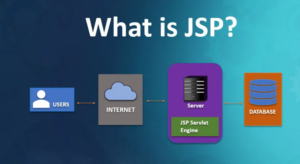Deploying Django applications on AWS (Amazon Web Services) provides a scalable and reliable infrastructure for hosting web applications. Here’s a general guide on how to deploy a Django application on AWS:
- Set up an AWS account:
- Sign up for an AWS account at https://aws.amazon.com/.
- Familiarize yourself with the AWS services and resources available for deployment.
- Set up an Amazon EC2 instance:
- Launch an EC2 instance, which will act as your virtual server for hosting the Django application.
- Choose an appropriate EC2 instance type based on your application’s requirements, such as CPU and memory needs.
- Select an Amazon Machine Image (AMI) that matches your server requirements, such as a Linux distribution (e.g., Amazon Linux or Ubuntu).
- Connect to the EC2 instance:
- Use SSH to connect to your EC2 instance using the key pair generated during the instance setup.
- Configure your local machine to connect securely to the EC2 instance.
- Install necessary software on the EC2 instance:
- Update the packages on the EC2 instance:
sudo apt update. - Install Python, pip, and other necessary dependencies on the instance.
- Install and configure a database server if your Django application requires one (e.g., PostgreSQL or MySQL).
- Set up the Django application on the EC2 instance:
- Clone your Django application’s code repository onto the EC2 instance.
- Install the required Python packages using pip:
pip install -r requirements.txt. - Configure the database settings in your Django project’s settings file.
- Set up a web server:
- Install a web server like Nginx or Apache on the EC2 instance.
- Configure the web server to serve your Django application using WSGI (Web Server Gateway Interface).
- Configure the web server to proxy requests to the Gunicorn or uWSGI application server.
- Set up a domain name:
- Register a domain name or use an existing one.
- Configure the DNS settings to point your domain name to the public IP address of your EC2 instance.
- Configure security:
- Set up security groups and configure inbound and outbound rules to control access to your EC2 instance.
- Configure SSL/TLS certificates for secure HTTPS communication if required.
- Test and launch the Django application:
- Start the Gunicorn or uWSGI application server to run your Django application:
gunicorn your_project_name.wsgi. - Test the application by accessing it through the domain name or the public IP address of the EC2 instance.
- Set up automatic scaling and load balancing (optional):
- If your application experiences high traffic or requires scalability, consider setting up AWS services like Elastic Load Balancer (ELB) and Auto Scaling.
- ELB distributes incoming traffic to multiple EC2 instances, while Auto Scaling automatically adjusts the number of EC2 instances based on traffic demand.
- Monitor and manage your application:
- Use AWS CloudWatch or other monitoring tools to monitor the performance and health of your EC2 instances.
- Implement log management and backup strategies to ensure data integrity and recoverability.
Remember to follow AWS’s best practices for security, cost optimization, and scalability when deploying your Django application. Additionally, you can leverage other AWS services like Amazon RDS for managed databases, Amazon S3 for storing media files, and AWS Identity and Access Management (IAM) for fine-grained access control.
Deploying your Django application on AWS provides you with a flexible and scalable infrastructure to handle your application’s demands and ensures high availability and reliability for your users.



